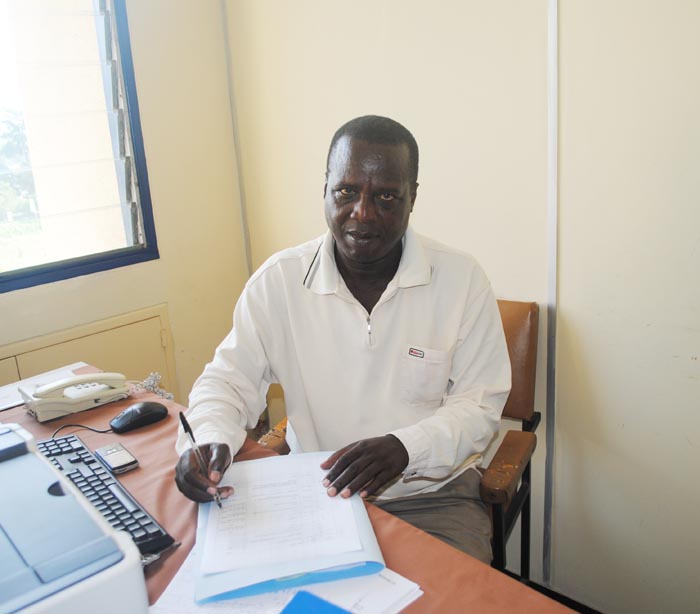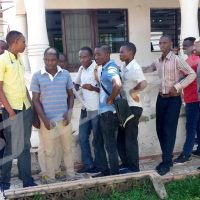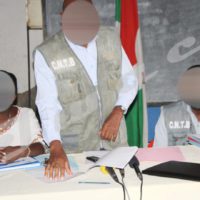Before the implementation of the Single Customs Territory, some issues need to be clarified- by Diane Uwimana

Dismas Baradandikanya: “Generally, there are two ways of collecting and accounting taxes: assembling and sharing taxes and the destination way taxes. And the negotiations are in the way. It is very soon to know and confess if all EAC clearing agents will go to the first entry.”©Iwacu
Last week, the Kenyan Association of International Freight and Warehousing was on strike to protest against the new system which will cause their job losses. “With the new system of the Single Customs Territory (SCT), there will be no stoppage at borders and checkpoints along the corridor till the goods reach their destination. They will only be cleared at the first entry.”
Moreover, some sources indicate that under the system, Rwandan and Ugandan clearing agents and customs officials would be able to leave their own offices to clear cargo and collect taxes directly at the port.
According to Dismas Baradandikanya, the spokesperson of the Burundian Commission of the Single Customs implementation, it is too early to admit that there are only Ugandan and Rwandan clearing agents and customs officials who will leave and work at the first entry of Mombasa port. “On 16th July, there was an EAC ministerial summit informing the public about the SCT steps and reforming different recommendations to handle obstacles and boost the regional trade integration phase,” underlines Baradandikanya.
He also indicates that recently, there has been a meeting held between EAC members to know exactly the standpoints of politicians, private sectors and civil society.
Furthermore, Baradandikanya mentions that the last EAC Head of States Summit states that there is a lack of a Single Basket.
“Generally, there are two ways of collecting and accounting taxes: assembling and sharing taxes and the destination way taxes. And the negotiations are in the way. It is very soon to know and confess if all EAC clearing agents will go to the first entry”, points out Baradandikanya.
It is necessary to underline that once implemented, all taxes will be evaluated and collected at the first entry of the port and transferred to the EAC country destination.
1. lack of the common jurisdiction network;
2. lack of common systems and customs procedures;
3. lack of free movement of goods due to the borders’ control;
4. lack of the convened mechanisms for collecting and sharing revenues;
5. lack of the internal taxes harmonization whereas the EAC has the common trade policy;
6. existence of the internal borders and effective origin rules;
7. existence of the non tariff barriers and
8. lack of common ICT system.
The characteristics of a full operational Single Customs Territory are the following:
1. the harmonization of internal taxes, national laws, procedures and common rules;
2. the harmonization of ICT equipment ;
3. permanent sharing of information for evaluation and collecting before goods arrival to the destination country;
4. sharing resources and facilities;
5. The elimination of all tariff and non tariff barriers and restrictions on EAC member states’ imports ;
6. the application of the common external tariffs of other non EAC regional imports at the first port;
7. goods from the EAC members would have the right to move freely;
8. the conflict resolution by a regional mechanism and
9. the adoption of the international norms.



















 IWACU Open Data
IWACU Open Data

